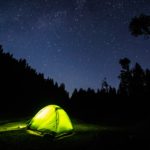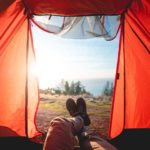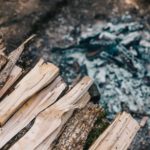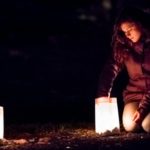Camping
Perhaps you’re taking time off work to escape the day to day routine of the big city life. Or maybe you long to reconnect with nature (don’t we all?). Whatever your reason, there are few prospects more exciting than the idea of going on a camping trip!
Not only does camping in nature help to lower your stress levels, it’ll also stimulate the production of serotonin, a chemical within your body that naturally makes you feel happier (Um, how ’bout yes please?). And yep, that’s scientifically proven.
Choosing The Right Gear
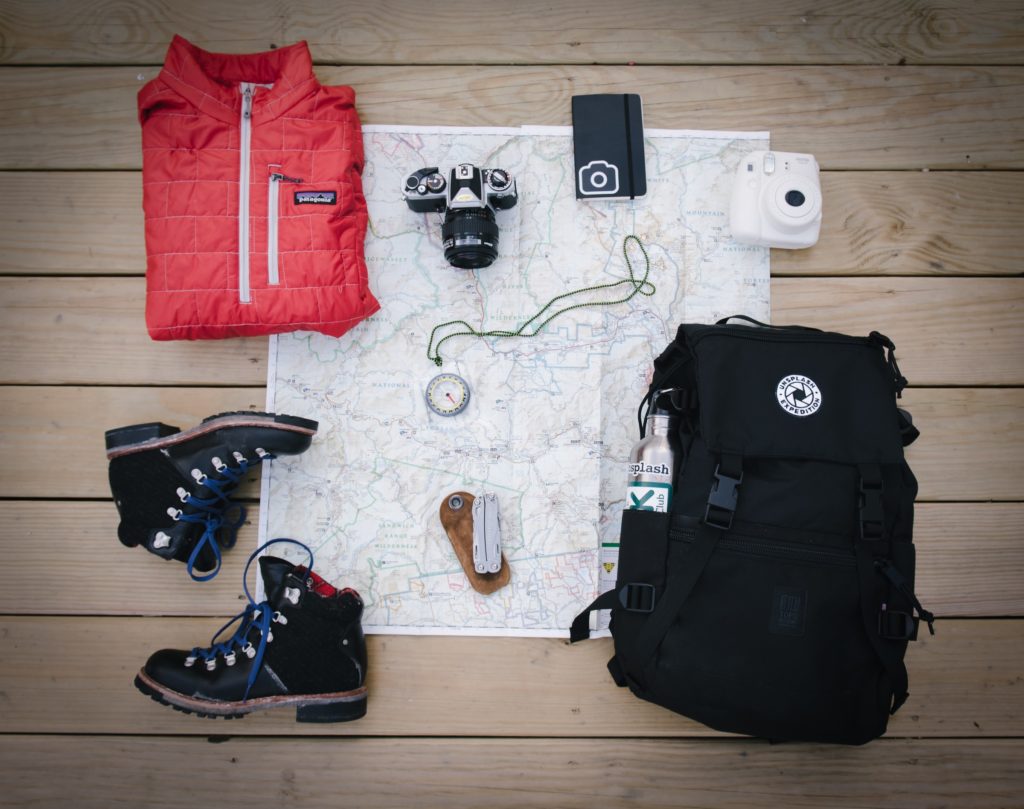
When deciding on which equipment to get, you should be asking yourself the following questions: “What season will I camp in?”, “Will it be hot or cold?”, “Can I expect a lot of rain?”, “Will my campsite have amenities, such as electricity & showers?” etc.
Once you have answered these questions thoroughly, you will have a MUCH better idea of where to begin.
Below, we have listed the necessary gear for your (first) camping adventure. It includes the basic setup you’ll need in order for you to take up this magnificent hobby.
Basic camping gear and budget
We will assume the following:
- You have never or not often camped before, but you want to get into it!
- You don’t own much camping gear and want to be better prepared.
- You are eco-conscious.
Remember, camping gear is a once-off investment (if chosen properly). If you look after your equipment, it can last you a lifetime.
Note: We were not paid by any of the companies listed in this guide to endorse their products, and all opinions are entirely our own.
Tent
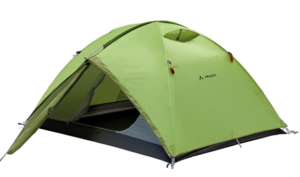
First and foremost, you are going to need a tent. Which tent you purchase depends on the amount of people that’ll be sleeping inside. If you plan to go camping with the family, you need a 3-10 person tent (depending on the amount of campers). Perhaps, it’s just you and your partner, then a 2-3 person tent will do. And – surprise – if you’re a solo adventurer, look for a one person tent.
- For a Couple or family of 3 people we recommend the: Vaude Campo dome tent Grande. – $206
- For a large family looking for a lot of space we recommend the: Vaude Badawi Long sand. – $940
Sleeping Bag
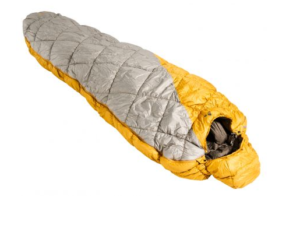
I’ve stressed the importance of sleeping bags in one of my bike touring articles and I’ll do it again here. Purchase a quality sleeping bag. They directly impact your sleep comfort. Trust me, you won’t enjoy a freezing night in your tent. I’d recommend getting a sleeping bag that’s rather too warm for you than too cold (you can always open it to cool off).
- Try the Meglis 700 XL SYN, if you are not camping in extremely cold environments. – $210
Sleeping pad
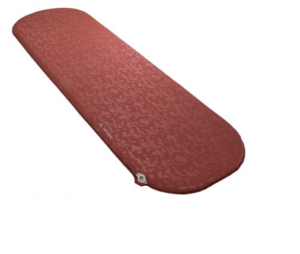
As you probably already know, a tent’s base is extremely thin, so any stones or rough terrain will be felt like you’re lying directly on it. At this point it is also important to note that it is necessary to remove any sharp and spiky items, such as stones and sticks from the floor where you will pitch your tent. Do it carefully – it will save you from not only an uncomfortable night, but also a broken tent.
Now back to the sleeping pad. Leoni & I sometimes bring blankets, which we use to soften the floor all round (plus, it makes it more cozy). But to be real here, that’s not always possible and mostly inconvenient to carry, especially when you travel without a car. Along with a good quality tent and sleeping bag, the sleeping pad is the third most important item and should be chosen wisely. Your ideal mattress weighs next to nothing, yet still provides a soft ground for a restful night.
There are so many sleeping pads out there, but one we recommend and trust is the Vaude Tour 3.8. – $110
Camping Pillow
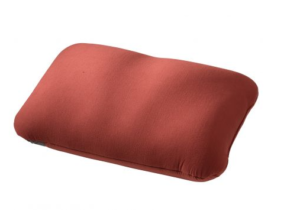
Leoni and I usually just use our jackets or hoodies as a makeshift pillow. It saves space and costs and does the job. But if you prefer investing in a quality eco-friendly camping pillow, we would recommend the Vaude Pillow. ($50)
Camping Chairs
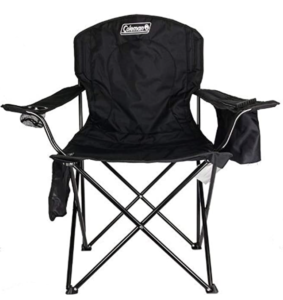
Camping chairs are not essential, but they can make your outdoor experience much more comfy. Whether or not you are into camping chairs probably depends on if you are the big-family-camping-vacation type or the minimalistic backpacker. But even for the latter, there are small and handy versions of camping chairs that can bring extra value to your trip.
Camping Table
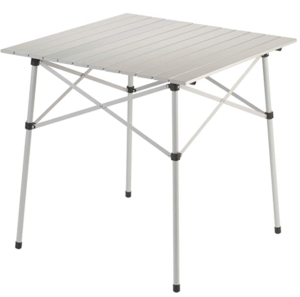
Again, it all depends on your kind of camping adventure. While ascending a mountain or trekking through a jungle, you are going to want to dump that table quickly. If you are staying in one spot and have planned evenings with board games and beer, that changes everything.
Lots of campsites are equipped with picnic tables. However, it can be useful to bring your own one, just in case.
Grand Total:
- Solo – $733
- Couple – $946
- Family (3) – $1361
- Family (5) – $2715 (The large price jump is due to the bigger tent)
These totals can fluctuate greatly, all depending on what you bring. The above items are obviously just recommendations – there are lots of great sustainable travel and outdoor brands out there.
The gear we have listed was produced in an eco-friendly way. That means that the process required less water, chemicals and CO2. Furthermore, eco-friendly products are made from recycled or natural resources, such as hemp and organic cotton, as well as bioplastics. Our trusted brand Vaude’s Green Shape label also claims to ensure fair wages and good working conditions.
Get Familiar With Your Gear At Home
Getting familiar with your camping gear out in the wild at night time can be a very frustrating activity. I’d recommend you to check all your gear out at home in a familiar space with the lights turned on. And if you happen to have a garden or some space in the living room – why not inaugurate your gear in a setting where it’s not that annoying when your tent collapses like a house of cards, because you have made a beginner’s mistake…
Set up your tent, get used to all the poles and connection points. While you are at it, get that smooth sleeping bag out, practise rolling it up and putting it back in it’s bag (man, I used to struggle with this as a kid!)
Test out all your electronics, make sure your lanterns work and that your head lamps are all systems go. Being stuck in the dark in the wild is great for star gazing but terrible for food cooking.
Waiting until you’re out in the wild to try out your gear is a rookie mistake. 😉
Plan Meals Ahead of Time
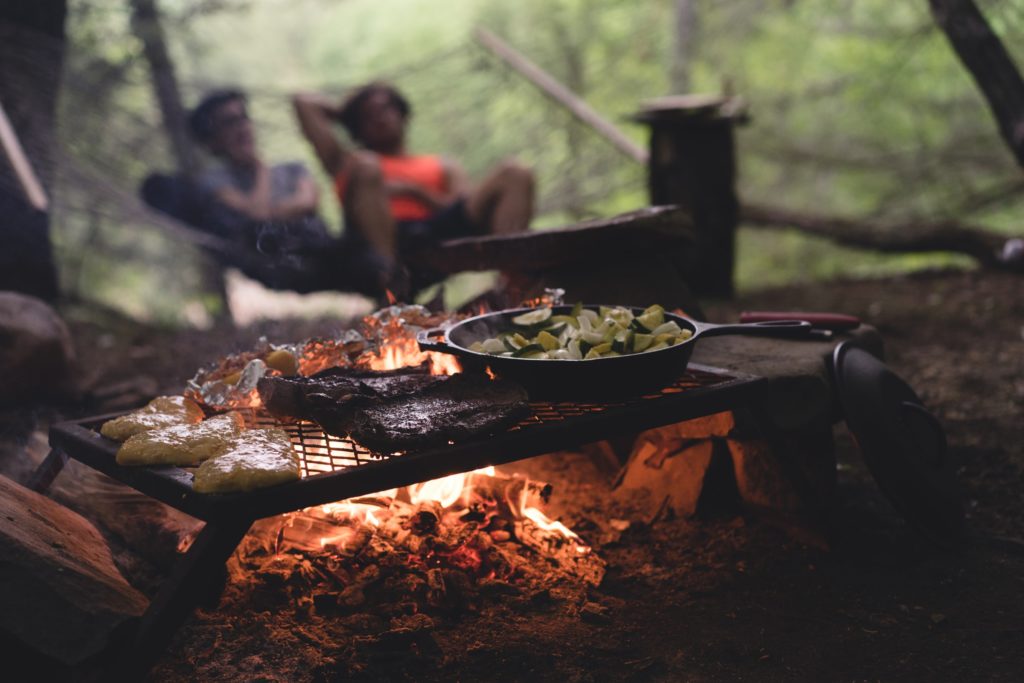
Cooking food outdoors can become a tedious task if you don’t prepare well enough. Although I love canned beans, eating them every night is going a bit overboard.
Some simple preparation can go a long way. The best way to simplify your camping meals is to plan what you’re going to eat ahead of time.
Ask yourself these 3 questions:
- How many meals will I need?
- How many people will eat?
- How much space do I have?
Once you’ve answered those questions, you can begin prepping the base ingredients, such as boiling rice etc. Especially if you rely on a camping cooker, this will save you a lot of time and gas. When you are actually at camp, all you will have to focus on is heating your pre-cooked food up, adding fresh veggies and spices and flame grilling the fish or meat over the fire.
For longer treks and budget trips you should focus more on canned food. From baked beans to spaghetthi in tomato sauce, there’s something for every taste. Pep it up with spices and some fresh ingredients you purchase along the way. With a little bit of creativity and talent, you’ll dine like a king or queen.
Packing The Right Clothes
Always pack according to the weather. If you know it will be raining make sure to bring a rain jacket and perhaps even an umbrella. Leoni and myself always pack quite minimalistic, but we do recommend you to bring more clothes if you are unsure about the weather. Trust us, we have made the mistakes so you don’t have to repeat them.
Pay Attention To Weather Forecasts
Use our handy weather forecasting widget to help you understand the weather in your area. Once you have found your camping location, click on the map to get the weather forecast.

